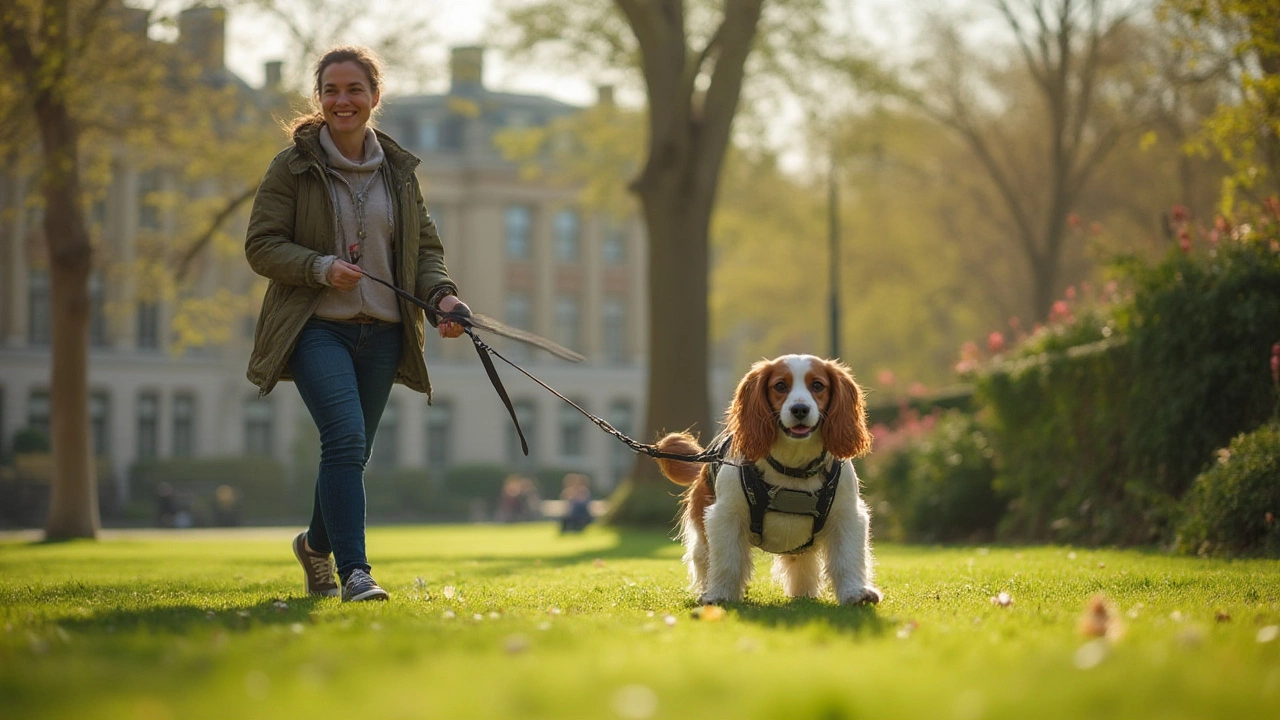Training Leash Basics: What Every Dog Owner Should Know
If you’ve ever struggled with a pulling pup, a training leash can be a game‑changer. It’s not just a longer rope – it’s a tool that gives you control while letting your dog learn good habits. Below we’ll break down how to choose the right leash, how to use it without hurting your dog, and a few simple drills you can start today.
Choosing the Right Training Leash
First thing’s first: not all leashes are created equal. Look for a leash that’s 4‑6 feet long, not too heavy, and made of a sturdy material like nylon or leather. A 1‑inch width gives you a good grip without cutting into your hand.
Some leashes come with a built‑in handle or a second short loop for extra control. That’s handy when you need to correct a sudden pull. If you train a strong breed, pick a leash rated for at least 50 lb pull‑force – you’ll thank yourself later.
Price matters, but durability matters more. A $15 nylon leash can outlast a $50 cotton one if you use it often. Check the stitching; double‑stitched seams are a sign the leash will hold up.
How to Use a Training Leash Effectively
When you first attach the leash, keep it loose – about a hand’s length of slack. This teaches your dog that walking beside you means staying relaxed.
If your dog lunges, stop walking immediately. The moment they pause, give a calm “yes” or click if you use a clicker, then resume walking. The pause is the correction; the leash is just the cue.
Never yank or yank hard. A sharp jerk can hurt the neck and create fear. Instead, use a gentle “give‑me‑the‑lead” motion: pull the leash straight back toward your body while stepping forward. Your dog feels the change in direction and learns to follow.
Practice short sessions – five minutes a day is enough. End each session on a good note with a treat or a quick play. Your dog will start to associate the leash with positive outcomes.
For puppies, a light‑weight leash is key. Heavy leashes can be intimidating and make it harder for them to focus. As they grow, you can graduate to a sturdier model.
Remember to check the clip regularly. A loose clip can slip, turning a simple walk into a chase. Tighten it after every walk.
Now that you know the basics, try these three quick drills:
- Loose‑Leash Walk: Walk at a normal pace. Each time the leash tightens, stop. Wait for slack, reward, then move on.
- Turn‑Around: When the leash is loose, turn left or right on command. The dog learns to follow direction rather than pulling forward.
- Stop‑And‑Sit: In the middle of a walk, say “stop” and ask for a sit. Release the leash slack as they comply. This builds impulse control.
Stick with these steps, and you’ll see fewer pulls, calmer walks, and a happier dog. A good training leash isn’t magic – it’s just a tool that makes consistent, patient training easier. Happy training!
Best Dog Leash and Harness for Pulling: Stop Your Dog from Tugging Walks
Discover the most effective tools to stop a dog from pulling on walks. From no-pull harnesses to clever training tips, get specific advice that works with real dogs.
